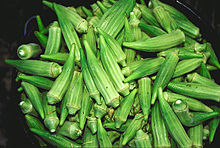Nav means New and Roz means day therefore Navroz means a new day. It is the beginning of the Persian New Year and the first day of spring.It is celebrated on March 21. Iranians start celebrating with New Years Eve on March 20.
Persians and other Indo-Iranian groups start preparing for Navroz with a major spring cleaning of their houses, buying new clothes to wear for the new year and buy flowers (Hyacinth and tulips).
On Navroz families dress in their new clothes and start the twelve-day celebration. On the day of Navroz people gather around the table, with Haft Sin on the table or set next to it and await the exact moment of the arrival of spring. At that time gifts are exchanged and they start by visiting the elders of their family then the rest of their families and finally their friends. On the thirteenth day families leave their homes and picnic outdoors.
Because of the house visits, you make sure you have a sufficient supply of pastry, cookies, fresh and dried fruits and special nuts on hand, as you typically serve your visitors with these items with tea or sherbet.
Some Novroz celebrants believe that whatever a person does on Novroz will affect the rest of the year. So, if a person is warm and kind to their relatives, friends and neighbors on Novroz, then the new year will be a good one. On the other hand, if there are fights and disagreements, the year will be a bad one.
- The Haft Sīn items are:-
- sabzeh – wheat, barley or lentil sprouts growing in a dish – symbolizing rebirth
- samanu – a sweet pudding made from wheat germ – symbolizing affluence
- senjed – the dried fruit of the oleaster tree – symbolizing love
- sīr – garlic – symbolizing medicine
- sīb – apples – symbolizing beauty and health
- somaq – sumac berries – symbolizing (the color of) sunrise
- serkeh – vinegar – symbolizing age and patience.
Other items on the table may include:
- Sonbol – Hyacinth (plant)
- Sekkeh – Coins – representative of wealth
- traditional Iranian pastries such as baklava, naan-nokhodchi
- Aajeel – dried nuts, berries and raisins
- lit candles (enlightenment and happiness)
- a mirror (symbolizing cleanness and honesty)
- decorated eggs, sometimes one for each member of the family (fertility)
- a bowl of water with goldfish (life within life, and the sign of Pisces which the sun is leaving). As an essential object of the Norvuz table, this goldfish is also “very ancient and meaningful” and with Zoroastrian connection.[68]
- rosewater, believed to have magical cleansing powers
- the national colours, for a patriotic touch
- a holy book Qur’an
- On the day of Navroz,, Persians prepare and set a special spread known as the Haft-Sinn – the seven S’s. Seven is considered a lucky number and the spread contains seven items which begin with the letter S in farsi. Today the seven S’s included are: Sabzeh (home grown sprouts); Samanou (wheat germ); Sib (apples); Sonbol (hyacinth); Senjed (jujube fruit); Seer (garlic); Somagh (sumac). In addition to the seven S’s, each Iranian family according to their religious belief e.g Muslims, place the Quran, rosewater,
..
In Surah Ya-Sin of the Holy Qur’an, Allah says:
Let the once dead earth be a sign to them. We gave it life, and from it produced grain for their sustenance. We planted it with palm and the vine and watered it with gushing springs, so that men might feed on its fruit. It was not their hands that made all this. Should they not give thanks?
- — Surah 36, Verses 33–35
Ismailis across the globe celebrate Navroz with the recital of devotional poetry in the form of ginans, qasidas.. Dried fruits, nuts and grains are distributed among Jamati members, symbolising blessings of abundance and sustenance. Navroz is also a time of family gatherings and celebratory meals, thus strengthening family bonds and fraternal ties.
All Muslim countries have different food on the day. In Iran they cook white Fish and rice. In Pakistan they have Egg and Daal Biriyani, Most people will use egg in the cooking. In our family we make Egg and Daal Biriyani and Lapsi.













